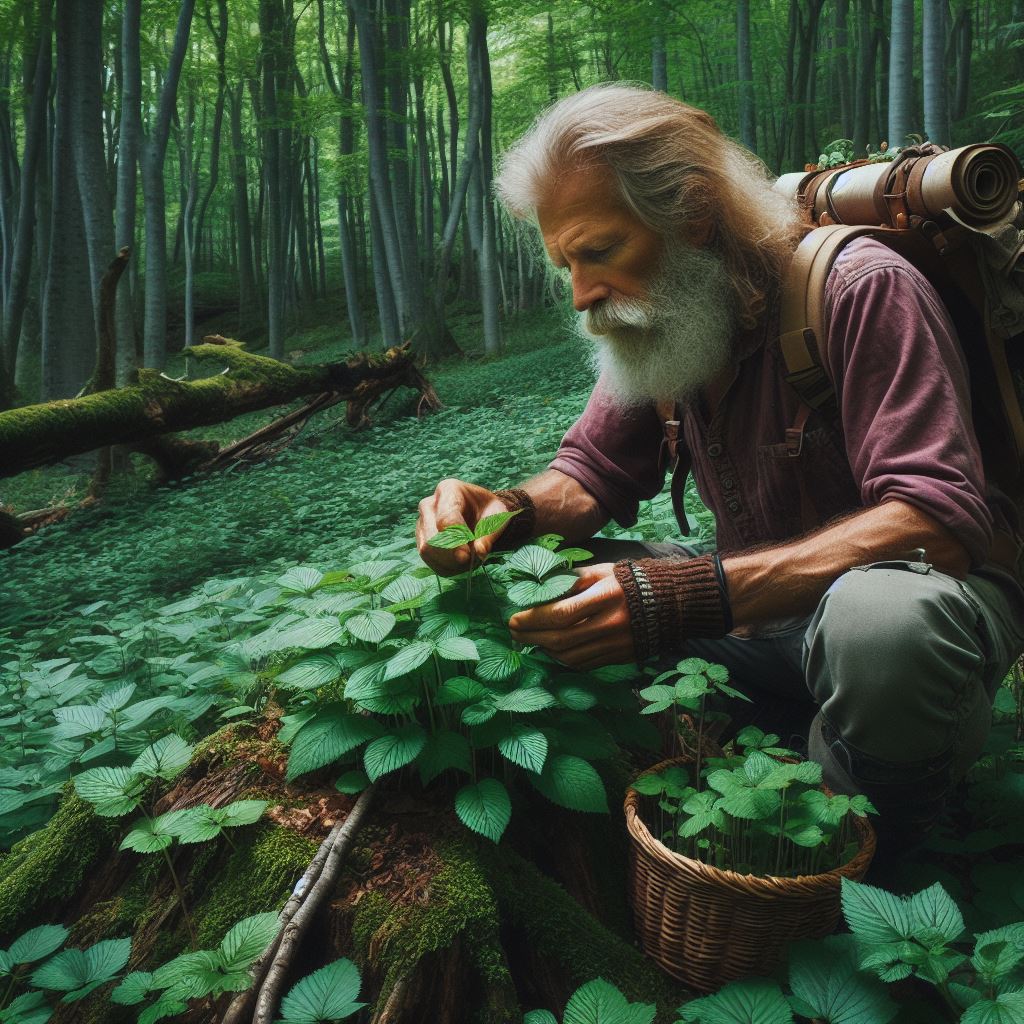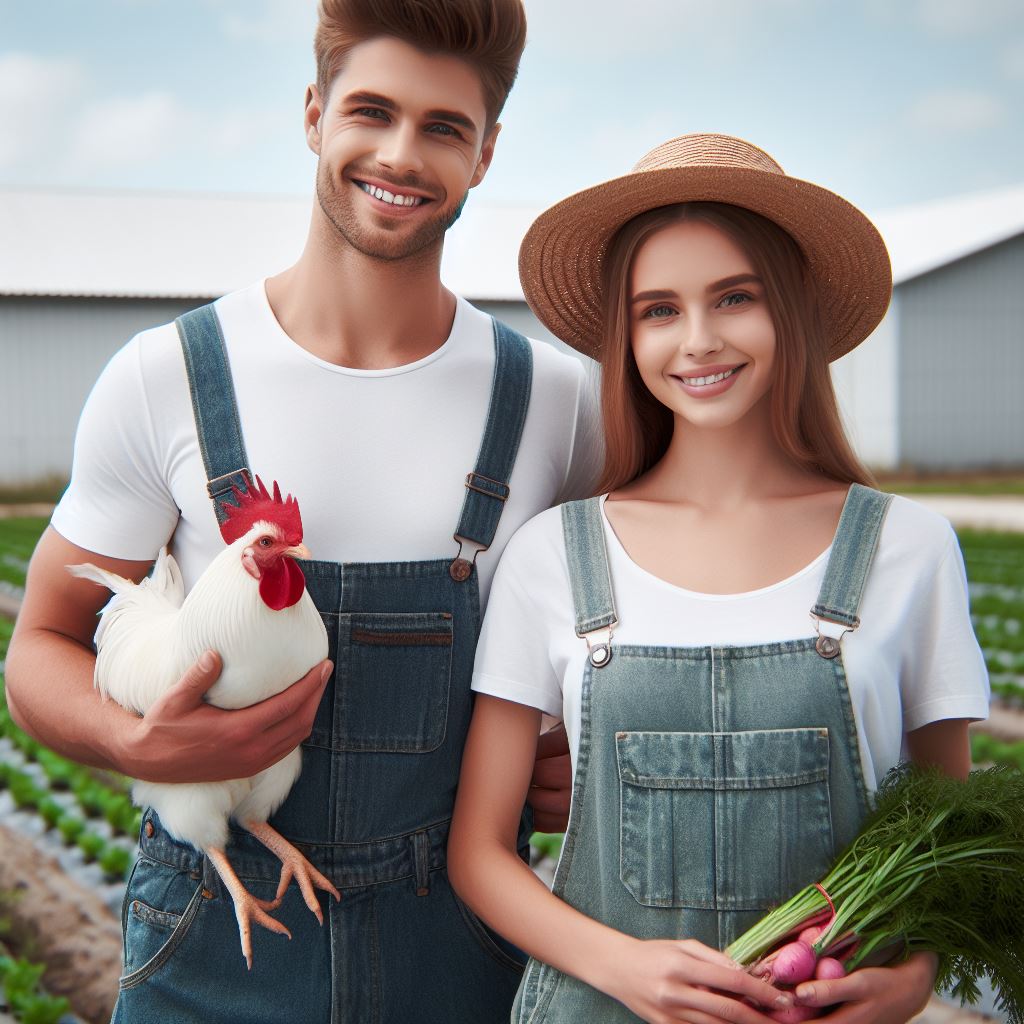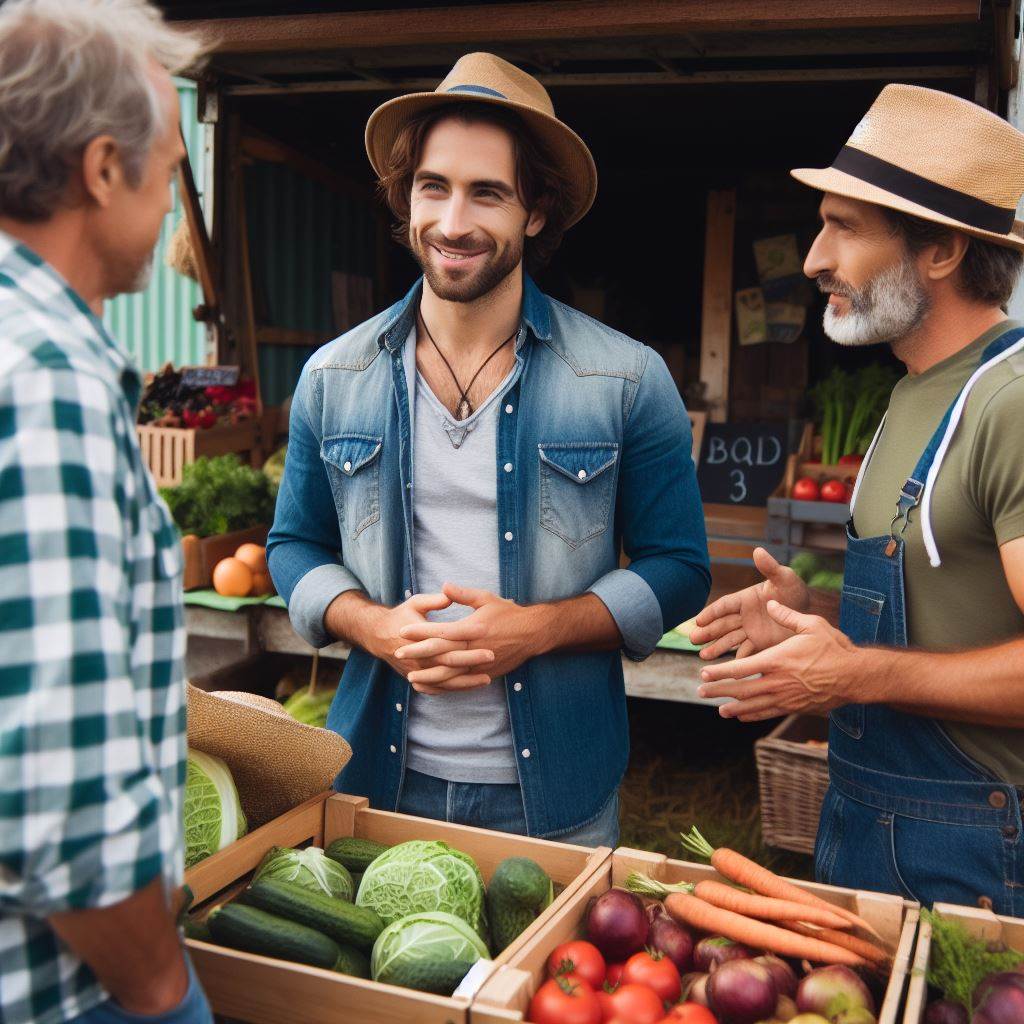Introduction
Brief explanation of foraging
Foraging is the act of searching and gathering wild food for nourishment and survival.
It is a practice deeply rooted in our ancestors’ history, allowing them to sustain themselves.
Today, foraging has gained popularity as people have become more interested in connecting with nature and accessing fresh, organic produce.
Importance of learning about safe and tasty edibles
Learning about safe and tasty edibles is of utmost importance.
Identifying poisonous plants is crucial to prevent poisoning and ensure our well-being.
Moreover, understanding which wild foods are delicious and nutritious allows us to add variety to our diet and explore new flavors.
Preview of the main points to be discussed
In this blog post, we will delve into the world of foraging.
We will provide a brief explanation of what foraging entails, discussing its historical significance and relevance in modern times.
Furthermore, we emphasize the importance of learning about safe and tasty edibles and explain how this knowledge directly impacts our health and overall well-being.
Throughout this blog post, we will offer practical tips and advice on how to forage safely, including guidance on recognizing edible plants and differentiating them from toxic ones.
Additionally, we will explore the vast array of tasty edibles available in the wild, highlighting their nutritional benefits and suggesting ways to incorporate them into delicious meals.
By the end of this post, you will have a comprehensive understanding of foraging and the importance of learning about safe and tasty edibles.
You will possess the knowledge and confidence to embark on your own foraging adventures and enhance your connection with nature through the discovery of untamed edible treasures.
Identifying Edible Plants
Researching local flora
Research your local flora by consulting books, websites, or local experts who can provide valuable information.
Understanding plant characteristics
- Leaves: Observe the shape, color, and texture of leaves to help identify edible plants.
- Stem: Examine the stem for any special characteristics or distinct features that can aid in identification.
- Flowers: Note the color, size, and arrangement of flowers, as this varies among different edible plants.
- Fruits and seeds: Analyze the appearance and ripeness of fruits and seeds, as they can provide valuable clues.
Use of field guides and online resources
Take advantage of field guides and online resources specific to your region, which offer detailed information and photographs.
Transform Your Agribusiness
Unlock your farm's potential with expert advice tailored to your needs. Get actionable steps that drive real results.
Get StartedSafety precautions when identifying plants
- Avoid plants with milky sap as it may be toxic to some individuals.
- Ensure you correctly identify a plant before consuming any part of it.
- Be cautious of plants with thorns, hairs, or spines, which may cause irritation or injury.
- Educate yourself about potential look-alike plants to avoid poisonous species.
- Start by sampling a small amount of a new plant to test your tolerance and any potential allergic reactions.
- Wash all foraged plants thoroughly to remove any dirt, insects, or other contaminants.
- If unsure, consult a knowledgeable expert in edible plants or a specialist before foraging.
Researching local flora
Identifying edible plants is a crucial skill for any forager.
Researching local flora is the first step in your journey, as it allows you to familiarize yourself with the plants that grow in your area.
By understanding plant characteristics such as leaves, stems, flowers, fruits, and seeds, you can confidently identify edible plants.
Leaves provide valuable clues about a plant’s identity.
Take note of their shape, color, and texture, as these can vary significantly between species.
Some edible plants may have distinctively shaped leaves, while others may have unique patterns or veins.
Understanding plant characteristics
Examining the stem of a plant can also be informative.
Look for any special characteristics or features such as thorns, colors, or textures that can help in identification.
Remember that certain plants may have poisonous stems or prickly thorns, so exercise caution when handling them.
Flowers play a vital role in identifying plants.
Take note of their color, size, and arrangement on the plant.
Some edible plants have distinctively colored or shaped flowers, while others may have unique patterns or blooming seasons.
Identifying edible flowers can enhance both your foraging experience and the flavors of your meals.
Fruits and seeds often give valuable clues about a plant’s edibility.
Analyze their appearance, texture, and ripeness.
Some edible plants produce recognizable fruits or seeds, while others may have subtle indications of edibility.
By familiarizing yourself with the characteristics of edible fruits and seeds, you can confidently harvest them.
Use of field guides and online resources
Field guides and online resources are excellent tools to aid in plant identification.
Utilize resources specific to your region, as they provide detailed information and photographs.
Field guides can be carried with you during foraging expeditions, while online resources offer accessibility and additional information
Safety precautions when identifying plants
When identifying plants, it is essential to take safety precautions.
Avoid plants with milky sap, as it can be toxic to certain individuals.
Correctly identify a plant before consuming any part of it, as confusion with poisonous look-alike species can have severe consequences.
Additionally, be cautious of plants with thorns, hairs, or spines, as they may cause skin irritation or injury.
Showcase Your Farming Business
Publish your professional farming services profile on our blog for a one-time fee of $200 and reach a dedicated audience of farmers and agribusiness owners.
Publish Your ProfileTesting your tolerance and potential allergic reactions is crucial.
Start by sampling a small amount of a new plant before consuming larger quantities.
Wash all foraged plants thoroughly to remove any dirt, insects, or other contaminants that may be present.
If you are unsure about the identification of a plant, it is always recommended to consult a knowledgeable expert in edible plants or a specialist.
Their expertise can help ensure a safe and enjoyable foraging experience.
Read: Community Gardens: Join the Movement
Hiking and Foraging Etiquette
Respect for private property and obtaining necessary permissions
- Always remember to respect private property boundaries when foraging.
- If you spot edible plants on private land, seek permission from the landowner before harvesting.
- Obtaining necessary permissions ensures that you are not trespassing or causing any inconvenience.
- Be mindful of any rules or regulations regarding foraging in specific areas.
- Respecting private property helps maintain positive relationships between foragers and landowners.
Leave no trace principles
- When foraging, it is crucial to leave the natural environment as undisturbed as possible.
- Carry a small bag or container to collect your edibles and avoid damaging plants or uprooting them.
- Follow the “leave no trace” principles by minimizing your impact on the ecosystem.
- Dispose of any waste properly and leave the foraging area just as you found it.
- Leaving no trace allows others and future generations to enjoy the same natural resources.
Ethical harvesting practices
- Practicing ethical harvesting ensures the sustainability of wild edible resources.
- Do not over-harvest from any particular area, as it may disrupt the delicate balance of the ecosystem.
- Be mindful of the plant’s growing patterns and only collect what you need, allowing for regeneration.
- Consider the impact of your harvesting practices on the overall health of the ecosystem.
- Harvesting ethically helps maintain the abundance and diversity of wild edibles over time.
Sustainable foraging
- Learn about the edible plants in your region and their sustainability status.
- Focus on foraging for plant species that are abundant and not threatened or endangered.
- Avoid foraging for rare or protected plants to support their conservation efforts.
- By practicing sustainable foraging, you contribute to the long-term availability of edible plants.
- Responsible foraging ensures the preservation of biodiversity and healthy ecosystems.
Avoiding damage to ecosystems
- Take precautions to avoid causing any harm to the ecosystems while foraging.
- Be careful not to trample on delicate vegetation or disturb wildlife habitats.
- Minimize your impact by staying on designated paths or trails when foraging.
- Avoid using harmful tools or techniques that may damage or disrupt the natural environment.
- Protecting ecosystems allows for the continued existence of diverse and thriving edible plants.
Connecting with local foraging communities
- Engage with local foraging communities or organizations to expand your knowledge and skills.
- Join foraging outings or workshops that promote responsible foraging practices.
- Exchange information, experiences, and tips with fellow foragers to enhance your foraging journey.
- By connecting with local foraging communities, you support a shared commitment to sustainable foraging.
- Together, we can ensure the enjoyment and preservation of our natural resources for future generations.
Read: Eating Local on a Budget: Tips & Tricks
Common Edible Plants
Focus on easily identifiable and safe species
- Wild berries
- Nuts and seeds
- Leafy greens and herbs
- Edible flowers
Detailed descriptions and photos of selected edible plants
In this section, we will provide detailed information and images of various edible plants
- Wild Berries: Includes raspberries, blackberries, blueberries, and strawberries. These berries are highly nutritious and delicious.
- Nuts and Seeds: Almonds, walnuts, pecans, sunflower seeds, and pumpkin seeds are some common edible options.
- Leafy Greens and Herbs: Spinach, kale, dandelion greens, parsley, and cilantro are packed with vitamins and minerals.
- Edible Flowers: Examples include pansies, violets, roses, and lavender. These flowers can add flavor and beauty to your dishes.
Tips on when and where to find them
Knowing when and where to find these edible plants is essential for foraging safely:
- Wild Berries: Most berries ripen during the summer. Look for them in forests, meadows, or near water sources.
- Nuts and Seeds: Nuts are typically harvested in the fall. Look around trees like oak, walnut, and chestnut.
- Leafy Greens and Herbs: These plants can be found from spring to fall in fields, gardens, and along walking trails.
- Edible Flowers: Various flowers bloom during different seasons. Check flower beds, gardens, or even your own backyard.
Nutritional value and culinary uses
Understanding the nutritional value and culinary uses of these plants will enhance your foraging experience:
- Wild Berries: Berries are rich in antioxidants, vitamins, and minerals. Enjoy them fresh, in desserts, or as toppings.
- Nuts and Seeds: They provide healthy fats and proteins. Use them in salads, trail mixes, or grind them into nut butter.
- Leafy Greens and Herbs: These greens offer a variety of vitamins and flavors. Use them in salads, smoothies, or cooked dishes.
- Edible Flowers: Besides beautifying your meals, they can also add delicate flavors and aromas to salads, desserts, or infusions.
By exploring these easily identifiable and safe edible plants, you can add nutritional diversity and nature’s bounty to your diet.
Always ensure proper identification and forage in sustainable locations for a safe and enjoyable experience.
Read: Slow Food Movement: What’s the Hype?

Foraging Safety Guidelines
Avoiding poisonous look-alikes
- Learn to identify safe edible plants by attending workshops or joining foraging groups.
- Carry guidebooks or smartphone apps with clear pictures and descriptions of edible plants.
- Always double-check the characteristics of a plant before consuming it to avoid any dangerous look-alikes.
- When in doubt, consult with experienced foragers or experts to confirm the identity of a plant.
Potential risks and precautions
Be aware of potential contamination from pesticides or pollutants
- Stay away from foraging sites near industrial areas or heavily trafficked roads.
- Choose locations that are known to have little to no pesticide usage.
- If in doubt about the cleanliness of an area, opt to forage in wild, unmanaged places.
Take precautions for allergic reactions
- Start by sampling a small portion of a new edible plant and wait for any adverse reactions.
- If any signs of allergic reactions occur, such as hives or difficulty breathing, seek immediate medical attention.
- Ensure you are not allergic to any common plants before venturing into foraging.
Proper preparation techniques
- Thoroughly wash all foraged plants to remove any dirt, insects, or other contaminants.
- Follow specific preparation guidelines for different plants to eliminate potential toxins.
- Some plants may require blanching, boiling, soaking, or cooking to make them safe for consumption.
- Understand that some mushrooms can be toxic if not properly cooked, so be cautious.
Importance of consultation with experts
- Prioritize seeking advice from local experts, botanists, or knowledgeable foragers.
- They can guide you in identifying edible plants, avoiding dangerous species, and understanding regulations.
- Attend workshops or participate in guided foraging tours to learn from experienced individuals.
- Engaging in conversation with experts will enhance your confidence and safety while foraging.
Read: Preserving the Harvest: Canning 101
Cooking with Foraged Ingredients
Incorporating foraged edibles into everyday recipes
- Experiment with adding foraged ingredients like wild mushrooms or herbs to your regular dishes.
- Use wild berries or fruits in smoothies, salads, or as toppings for desserts.
- Replace store-bought greens with foraged edible greens, such as dandelion leaves or chickweed, in your salads.
- Enhance the flavor of soups or stews by adding wild garlic, nettles, or other edible foraged plants.
Culinary tips and tricks
- Make sure to properly identify and learn about foraged ingredients before using them in your recipes.
- Clean foraged ingredients thoroughly to remove any dirt or bugs.
- Use foraged ingredients when they are at their peak freshness and flavor for the best results.
- Store foraged ingredients properly to maintain their taste and texture.
Unique flavors and textures of foraged ingredients
- Discover the earthy and nutty taste of wild mushrooms like morels or chanterelles.
- Experience the tangy and tart flavors of wild berries like blackberries or raspberries.
- Enjoy the delicate and fresh taste of wild herbs like sorrel or wild chives.
- Explore the crisp and unique textures of wild greens like purslane or lamb’s quarters.
Sharing favorite foraged recipes
- Try a delicious wild mushroom risotto that showcases the rich flavors of foraged fungi.
- Whip up a refreshing salad with a mix of foraged edible greens, topped with a homemade vinaigrette.
- Delight your taste buds with a wild berry cobbler, using freshly picked berries.
- Learn to make a flavorful pesto using foraged herbs instead of traditional basil.
By incorporating foraged edibles into everyday recipes, you can add exciting flavors and unique textures to your meals.
With some culinary tips and tricks, you can ensure that you are using foraged ingredients safely and at their best.
Highlighting the distinct tastes and textures of these ingredients will elevate your dishes to a whole new level.
Don’t forget to try out some favorite foraged recipes that have been shared by experienced foragers.
Get creative in the kitchen and enjoy the abundance of nature’s pantry!
Conclusion
Recap of key points discussed
In this blog post, we explored the art of foraging for safe and tasty edibles.
We learned about the importance of proper identification, sustainable practices, and the seasonality of foraging.
Encouragement to explore the world of foraging
Now that you have a basic understanding of foraging, we encourage you to step into nature and explore the abundance of edible treasures waiting to be discovered.
Embrace the adventure and connect with your environment in a meaningful way.
Final thoughts on the benefits of foraging for safe and tasty edibles
Foraging not only provides a rewarding experience but also offers numerous benefits.
It promotes a deeper knowledge of local ecosystems, enhances our connection with nature, and provides access to nutritious and delicious foods.
Additionally, foraging can be a sustainable and cost-effective alternative to store-bought produce.
In a nutshell, foraging allows us to engage in a primal practice that reconnects us to nature’s abundance.
By learning to identify safe and tasty edibles, we can embark on an exciting and fulfilling culinary journey that nourishes both our bodies and souls.
So, let us venture forth with curiosity, respect, and an open mind, as we unlock the wonders of the natural world through foraging.




